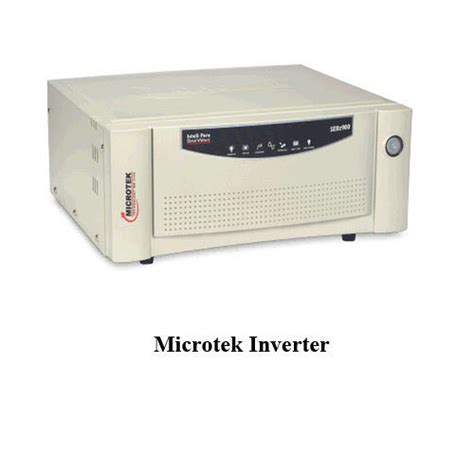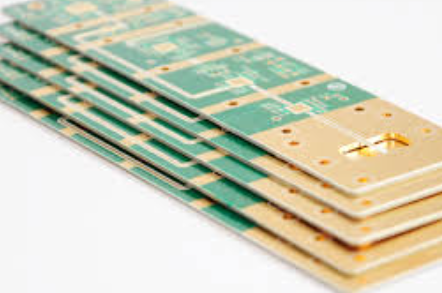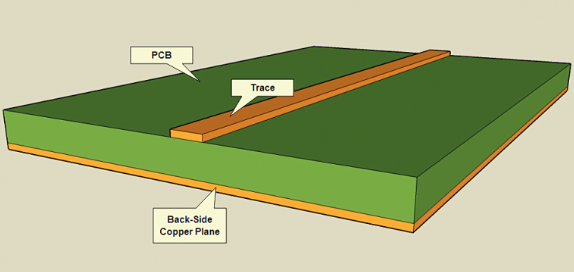PCB Sharp Corners: Design Myths and Modern Routing Solutions

Key Takeaways
When navigating PCB manufacturing challenges, understanding how modern techniques address historical design constraints is crucial Contemporary PCB manufacturing companies have largely mitigated issues like acid traps through advanced etching processes and improved chemical control These advancements ensure that sharp angles no longer pose reliability risks, debunking decades-old myths about 90-degree corners causing fabrication defects
The debate over PCB manufacturing cost often overlooks how automated routing tools now optimize trace layouts without manual intervention Modern software accounts for electromagnetic interference (EMI) risks, enabling designers to prioritize routing efficiency over arbitrary angle restrictions Pro tip:
"Always consult your PCB manufacturing business partner early in the design phase—their process capabilities may allow sharper angles than traditional guidelines suggest."
While 45-degree angles remain popular for high-frequency signals, 90-degree traces are now viable in most applications The key lies in balancing electrical performance with manufacturability For instance, dense layouts benefit from sharper corners to conserve space, directly impacting PCB manufacturing cost efficiency
Did you know? Leading manufacturers like Andwin PCBA utilize real-time impedance analysis to validate sharp-corner designs, ensuring signal integrity even in complex boards This eliminates the need for time-consuming redesigns and aligns with today’s agile prototyping demands
By leveraging these innovations, you can confidently prioritize functional requirements over outdated rules—modern PCB manufacturing technologies have redefined what’s possible in board design

Debunking PCB Sharp Corner Myths
For decades, designers were taught to avoid sharp corners in PCB manufacturing due to concerns about acid traps during etching and electromagnetic interference (EMI) These fears stemmed from older fabrication processes where chemical pooling in 90-degree angles could weaken traces or create manufacturing defects However, advancements in pcb manufacturing companies’ capabilities have rendered these concerns obsolete Modern photolithography and electroplating techniques now ensure precise copper deposition, eliminating the risk of acid traps even in complex geometries
The myth that sharp corners inherently cause EMI issues also fails to hold under scrutiny While right-angle bends can theoretically create impedance discontinuities at high frequencies (above 10 GHz), most consumer and industrial electronics operate far below this threshold For applications requiring ultra-high-speed signals, pcb manufacturing cost-effective solutions like tapered corners or optimized return paths mitigate any potential interference without mandating 45-degree angles
Consider the evolution of design tools and fabrication precision:
| Factor | Traditional Approach | Modern Solution |
|---|---|---|
| Corner Precision | Manual adjustments | Auto-routing with DFM checks |
| Etching Accuracy | ±3 mil tolerance | ±05 mil laser-direct imaging |
| EMI Management | Avoid sharp angles | Simulated field modeling |
This shift has allowed pcb manufacturing business models to prioritize functionality over arbitrary constraints You no longer need to sacrifice routing density or signal integrity to accommodate outdated rules Instead, focus on leveraging your CAD software’s design-for-manufacturing (DFM) features to validate trace geometry against your fabricator’s specifications
By understanding these advancements, you can confidently use sharp corners where they improve layout efficiency—such as in dense BGA breakouts or impedance-controlled regions—without fearing manufacturing defects or performance trade-offs The key lies in collaborating with your pcb manufacturing partner early to align design choices with their process capabilities
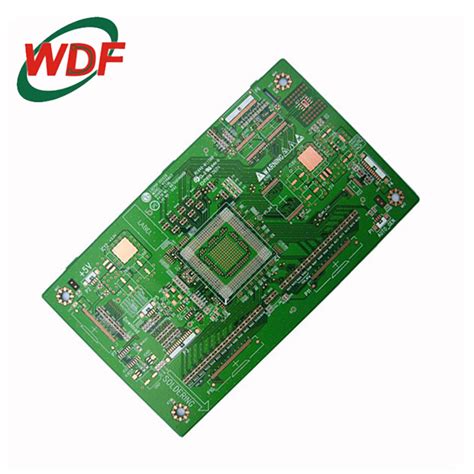
Modern Manufacturing Eliminates Acid Traps
Advancements in PCB manufacturing processes have rendered acid traps—a historical concern with sharp corners—essentially obsolete Modern PCB manufacturing companies leverage high-precision etching techniques and improved solder mask technologies to control copper dissolution during fabrication These innovations ensure uniform material removal, even around acute angles, eliminating the risk of trapped etchant liquids that could corrode traces over time
You’ll find that today’s automated optical inspection (AOI) systems and direct imaging methods allow manufacturers to detect and correct potential defects long before boards reach mass production This precision reduces waste and keeps PCB manufacturing cost competitive, even for complex designs Additionally, the adoption of micro-via drilling and laser ablation enables tighter tolerances, ensuring sharp corners don’t compromise structural integrity
For your PCB manufacturing business, this means greater design flexibility without sacrificing reliability While older guidelines warned against 90-degree angles, contemporary processes mitigate risks through material science and process control For instance, immersion silver or ENIG (Electroless Nickel Immersion Gold) surface finishes further protect against corrosion, addressing residual concerns
By collaborating with experienced PCB manufacturing companies, you can confidently integrate sharp angles where they improve routing efficiency or space utilization The key lies in specifying modern fabrication standards and verifying capabilities during vendor selection—steps that align technical requirements with cost-effective outcomes
EMI Truths About 90-Degree Angles
The fear of electromagnetic interference (EMI) from 90-degree traces stems from outdated assumptions about signal behavior While sharp angles were once problematic for high-frequency circuits, advancements in pcb manufacturing processes and simulation tools have largely mitigated these risks Modern pcb manufacturing companies leverage precise impedance control and material innovations to minimize discontinuities that could cause reflections or radiation
At lower frequencies (below ~1 GHz), the impact of right-angle bends on EMI is negligible Even in high-speed designs, the actual risk depends more on trace width, spacing, and layer stackup than corner geometry alone Tools like 3D field solvers now allow designers to model and optimize current flow around bends, ensuring compliance with EMI standards before prototyping This reduces pcb manufacturing cost by eliminating guesswork and unnecessary redesigns
Critically, the "antenna effect" myth—where sharp corners supposedly radiate energy—ignores how modern substrates absorb and dissipate electromagnetic fields Materials like low-loss laminates and embedded shielding layers counteract potential interference For pcb manufacturing business models focused on high-reliability applications, these advancements mean 90-degree angles no longer automatically disqualify a design
That said, consistency matters more than dogma If your layout requires dense routing, right-angle traces can save space without compromising performance However, in mmWave or RF designs above 10 GHz, smoother arcs might still be preferable—not because of inherent EMI risks, but to simplify impedance matching The key is balancing theoretical concerns with practical pcb manufacturing realities, using empirical data rather than inherited rules of thumb
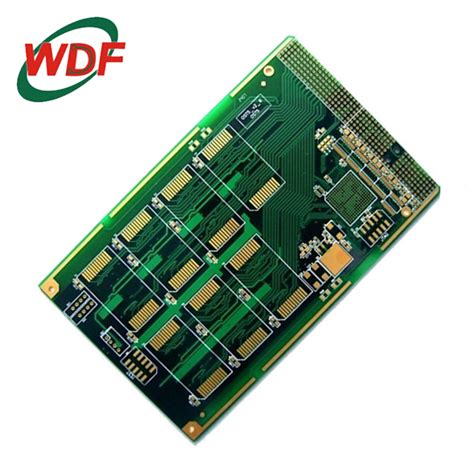
Routing Efficiency With Advanced Tools
Contemporary PCB manufacturing workflows leverage intelligent routing software to achieve unprecedented precision in trace layout design Modern automated routing algorithms analyze signal integrity requirements, thermal constraints, and electromagnetic compatibility in real time, allowing you to create complex geometries—including sharp angles—without the manual guesswork that plagued older workflows Tools like adaptive impedance calculators and 3D field solvers dynamically adjust trace widths and spacing, ensuring PCB manufacturing companies can maintain consistent performance even when using 90-degree bends in high-density areas
This shift isn’t just about design flexibility—it directly impacts PCB manufacturing cost By integrating design-for-manufacturability (DFM) checks into routing tools, you eliminate post-design revisions caused by outdated “sharp corner” assumptions For example, real-time acid trap detection algorithms flag genuine solder mask risks while ignoring harmless angles, reducing scrap rates Advanced tools also optimize material usage, automatically adjusting copper pour patterns to minimize waste during panelization—a critical advantage for scaling any PCB manufacturing business
More importantly, these systems enable topology-driven routing, where traces follow the most efficient electrical paths rather than arbitrary angle restrictions You’ll find that 45-degree bends, once considered a “safer” default, often introduce unnecessary meandering in multilayer boards Instead, constraint-driven autorouters prioritize shorter paths with sharper turns where appropriate, improving signal timing without compromising reliability Pairing these tools with AI-powered thermal simulations further ensures hotspots near angled traces are preemptively mitigated, aligning with the tighter tolerances modern PCB manufacturing processes now support
As you implement these advancements, focus on tool interoperability Seamless data exchange between routing suites and CAM software eliminates file conversion errors, preserving design intent from concept to fabrication This end-to-end integration is what makes sharp-corner routing not just viable but strategically advantageous in today’s high-speed PCB landscape
45 vs 90-Degree Angle Design Debate
When planning trace routing, you’ve likely encountered the long-standing debate: should you prioritize 45-degree angles or embrace 90-degree corners? Traditional design guidelines often favored 45-degree bends, citing concerns about pcb manufacturing challenges like acid traps and electromagnetic interference (EMI) However, advancements in fabrication technologies and materials have reshaped this conversation
Modern pcb manufacturing companies now use precision etching processes and high-resolution imaging to minimize the risk of acid pooling at sharp corners This eliminates the historical justification for avoiding 90-degree angles in most applications While 45-degree traces still offer marginally smoother signal flow in high-frequency designs, the difference is negligible for the majority of circuits operating below 1 GHz The key lies in evaluating your specific use case—high-speed digital layouts may benefit from rounded corners, but standard analog or low-frequency boards won’t suffer from sharper turns
Cost considerations also play a role Using 90-degree angles simplifies routing, reducing design time and pcb manufacturing cost by minimizing unnecessary layer transitions For example, densely packed boards with complex interconnects can maintain cleaner layouts without sacrificing reliability This efficiency is particularly valuable for startups or businesses scaling their pcb manufacturing business, where balancing performance and affordability is critical
That said, thermal management and mechanical stress remain secondary factors Sharp corners in high-current traces may create localized heat accumulation, but this is easily mitigated through proper copper balancing Similarly, modern substrate materials like FR-4 or polyimide flex boards withstand mechanical stress effectively, even at 90-degree junctions
Ultimately, the choice between 45- and 90-degree angles hinges on design priorities rather than rigid rules Advanced EDA tools now automate corner optimization, allowing you to focus on broader layout strategies while ensuring manufacturability By aligning your approach with current pcb manufacturing capabilities, you can achieve both functional and economic efficiency without compromising board integrity
Optimizing Traces Without Compromising Integrity
When designing PCB layouts, balancing routing efficiency with signal integrity requires understanding how modern pcb manufacturing capabilities have evolved Today’s pcb manufacturing companies leverage advanced fabrication techniques like laser direct imaging (LDI) and precision etching, which minimize variations in trace geometry—even at sharp angles This means you no longer need to overcompensate with conservative 45-degree bends to avoid supposed reliability risks Instead, focus on optimizing trace widths and spacing based on your board’s specific electrical requirements, trusting that pcb manufacturing cost improvements have made high-precision production accessible for most projects
A common misconception is that avoiding 90-degree corners inherently reduces pcb manufacturing business risks However, contemporary design software now includes real-time impedance calculators and electromagnetic field simulators, allowing you to model how sharp angles interact with adjacent traces or planes By pairing these tools with automated design-for-manufacturing (DFM) checks, you can identify potential fabrication challenges before finalizing the layout For instance, acute angles in high-frequency circuits might require slight adjustments to prevent impedance mismatches, but these tweaks don’t demand a complete redesign
To further streamline workflows, consider collaborating early with your pcb manufacturing partner Their expertise in material selection and process tolerances can help you avoid over-engineering traces while maintaining performance For example, opting for low-loss laminates or adjusting copper weights might offset any marginal risks associated with compact routing patterns This collaborative approach not only accelerates prototyping but also optimizes pcb manufacturing cost by reducing unnecessary iterations
Ultimately, the goal is to achieve clean, efficient routing without sacrificing reliability—a balance made possible by aligning design strategies with modern fabrication realities By prioritizing data-driven decisions over outdated rules, you can unlock new levels of density and performance in your PCB layouts
Why Sharp Corners Aren’t a Problem Now
You might have heard warnings about avoiding sharp angles in PCB traces, but today’s PCB manufacturing technologies have largely neutralized these historical concerns While acid traps and EMI risks were valid issues decades ago, advancements in fabrication precision and material science allow modern PCB manufacturing companies to produce boards with 90-degree angles without compromising reliability
The fear of acid traps—where etchant fluid could pool in sharp corners—stems from older chemical etching processes However, contemporary PCB manufacturing workflows use laser-direct imaging (LDI) and automated fluid control systems, ensuring even etching across all geometries This eliminates the risk of uneven copper removal, even in tight corners For high-frequency designs where EMI was once a worry, improved simulation tools now let engineers model electromagnetic behavior accurately, allowing them to optimize trace angles for signal integrity without rigid restrictions
Cost considerations have also evolved Early PCB manufacturing cost models penalized complex layouts, but automated routing and panelization algorithms enable denser designs without added expenses Modern PCB manufacturing business practices prioritize design flexibility, with fabricators offering tailored design-for-manufacturability (DFM) feedback to balance performance and affordability
Advanced design software further supports this shift Autorouters can now intelligently mix 45-degree and 90-degree angles based on space constraints, reducing manual rework When paired with impedance-matching techniques and proper grounding strategies, sharp corners no longer dictate your routing decisions—they’re just another tool in your design toolkit
The key lies in collaboration: working closely with your PCB manufacturing partner ensures that thermal management, material selection, and production tolerances align with your design goals By leveraging modern fabrication capabilities, you can focus on optimizing functionality rather than adhering to outdated geometric constraints
PCB Routing Best Practices Today
When developing modern PCB layouts, you’ll find that prioritizing routing efficiency and manufacturability delivers better results than obsessing over outdated rules Contemporary design software now integrates real-time impedance calculations and automated clearance checks, allowing you to focus on optimizing signal paths rather than manually avoiding sharp angles Leading PCB manufacturing companies emphasize collaboration during the design phase—sharing stack-up specifications and tolerance guidelines upfront helps avoid costly revisions
A key strategy involves balancing pcb manufacturing cost with performance needs For instance, using 45-degree miters exclusively might add unnecessary complexity in low-frequency designs, while 90-degree traces in high-speed sections can be managed effectively with proper ground plane shielding Tools like differential pair routing and length tuning ensure signal integrity without forcing artificial geometric constraints
Another critical practice is leveraging design-for-manufacturing (DFM) principles Most pcb manufacturing business operations now employ advanced etching and plating techniques that mitigate risks like undercutting, even with tighter trace geometries You’ll want to maintain consistent trace widths in high-current paths and avoid abrupt width changes—subtle tapering often works better than sharp transitions
For multilayer boards, consider via placement and thermal relief patterns early Modern autorouters can optimize fan-out patterns, but manual adjustments near connectors or high-pin-count ICs often yield cleaner results Pairing this with impedance-controlled routing ensures compatibility with high-frequency applications, a feature many pcb manufacturing providers now standardize in their process controls
Ultimately, the right approach blends tool-assisted automation with strategic human oversight When selecting partners for prototyping or mass production, prioritize pcb manufacturing companies that offer transparent feedback on design tradeoffs—this collaboration minimizes guesswork and aligns your routing strategy with current industry capabilities

Conclusion
The evolution of PCB manufacturing technologies has fundamentally reshaped how designers approach routing challenges While outdated concerns about sharp corners once dominated design decisions, today’s advanced fabrication processes and precision tools have rendered most historical limitations obsolete Modern PCB manufacturing companies leverage high-resolution imaging, laser-direct structuring, and improved etching techniques to ensure even complex geometries—including 90-degree angles—are produced reliably
When evaluating PCB manufacturing cost, it’s critical to recognize that avoiding sharp corners no longer guarantees savings Instead, prioritizing efficient routing patterns and leveraging automated design tools often yield better cost-performance ratios For instance, eliminating unnecessary 45-degree transitions can reduce trace lengths, simplify layouts, and minimize material waste—a strategic advantage in high-volume PCB manufacturing business operations
The debate over 45-degree versus 90-degree angles ultimately hinges on application-specific requirements rather than universal rules High-frequency designs might still benefit from smoother curves, but for most applications, sharp corners pose no measurable risk to signal integrity or durability By collaborating closely with PCB manufacturing partners early in the design phase, you can optimize layouts for both performance and scalability without sacrificing innovation
In this context, clinging to outdated myths doesn’t just hinder creativity—it overlooks the transformative potential of modern manufacturing Whether you’re prototyping or scaling production, today’s solutions empower you to focus on functional priorities rather than arbitrary constraints The key lies in understanding how far PCB manufacturing has advanced—and trusting those advancements to support your boldest design choices

FAQs
Do sharp corners in PCB traces still cause manufacturing defects?
Modern pcb manufacturing processes have largely eliminated historical concerns Advanced etching techniques and improved quality control measures prevent acid traps and uneven copper erosion, even with 90-degree angles Leading pcb manufacturing companies now prioritize design flexibility over restrictive routing rules
How do 90-degree corners affect EMI in high-frequency designs?
While early studies suggested sharp angles could worsen EMI, simulations using contemporary tools show minimal impact when traces are properly impedance-matched Most pcb manufacturing business workflows integrate EMI analysis software, allowing designers to validate performance before production
Does avoiding 45-degree angles increase pcb manufacturing cost?
No—modern fabrication equipment handles complex geometries efficiently Pcb manufacturing cost depends more on layer count and material selection than corner styles Optimizing trace layouts for space efficiency often offsets any marginal processing differences
Can sharp corners weaken signal integrity in multi-gigabit designs?
At extremely high frequencies (>25 GHz), cumulative effects from multiple sharp bends might require tuning However, most pcb manufacturing partners offer signal integrity testing to identify and resolve such edge cases during prototyping
Why do some design guidelines still recommend rounded corners?
Legacy standards persist in industries with conservative certification processes For cutting-edge applications, collaborate with pcb manufacturing companies that understand your performance requirements and fabrication capabilities
Need Expert Guidance for Your PCB Project?
For tailored solutions that balance design innovation and manufacturability, please click here to consult with engineers specializing in high-performance pcb manufacturing


